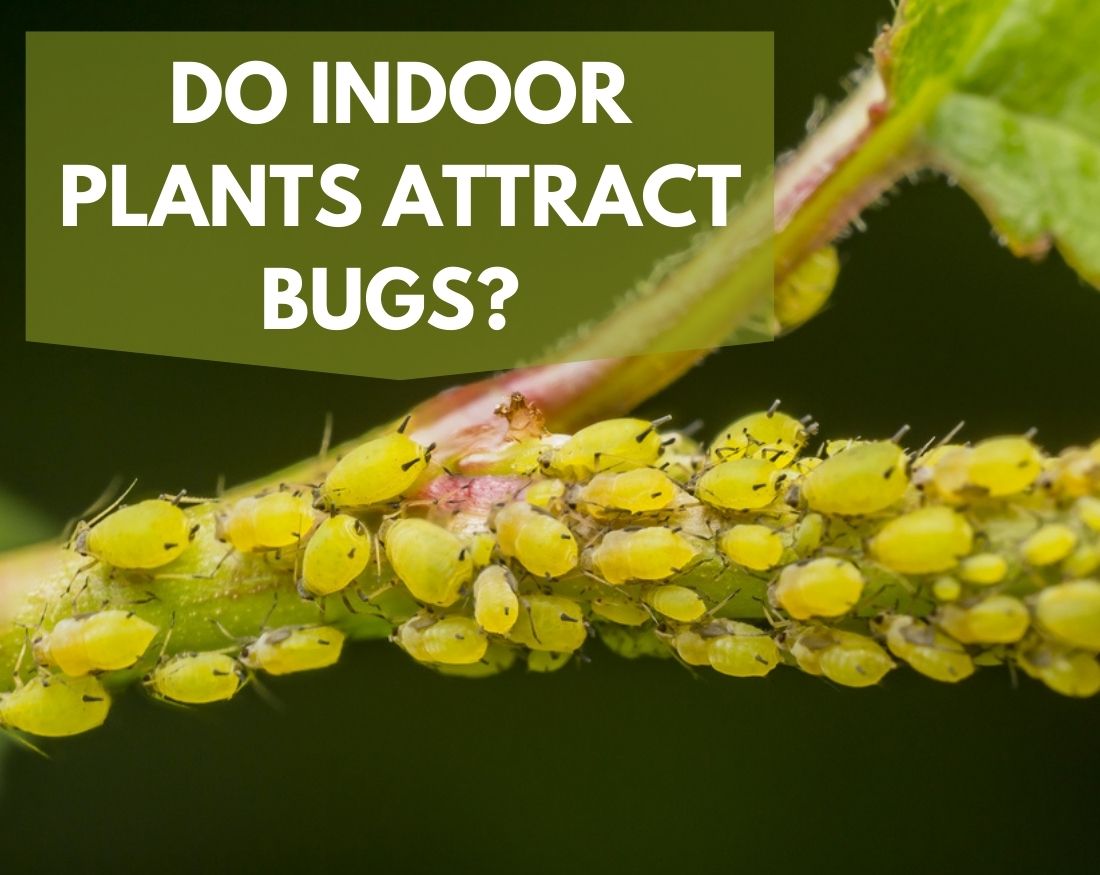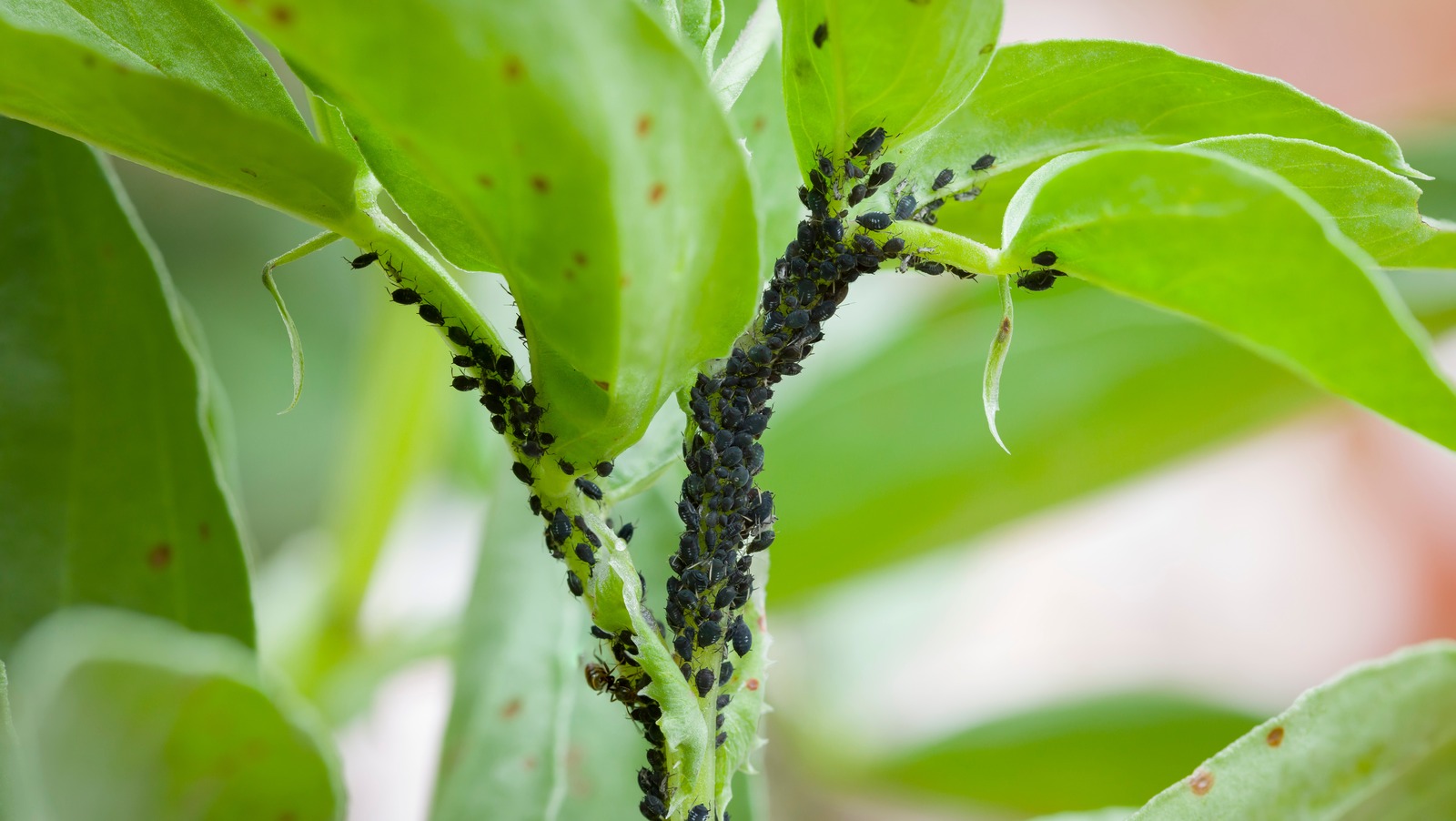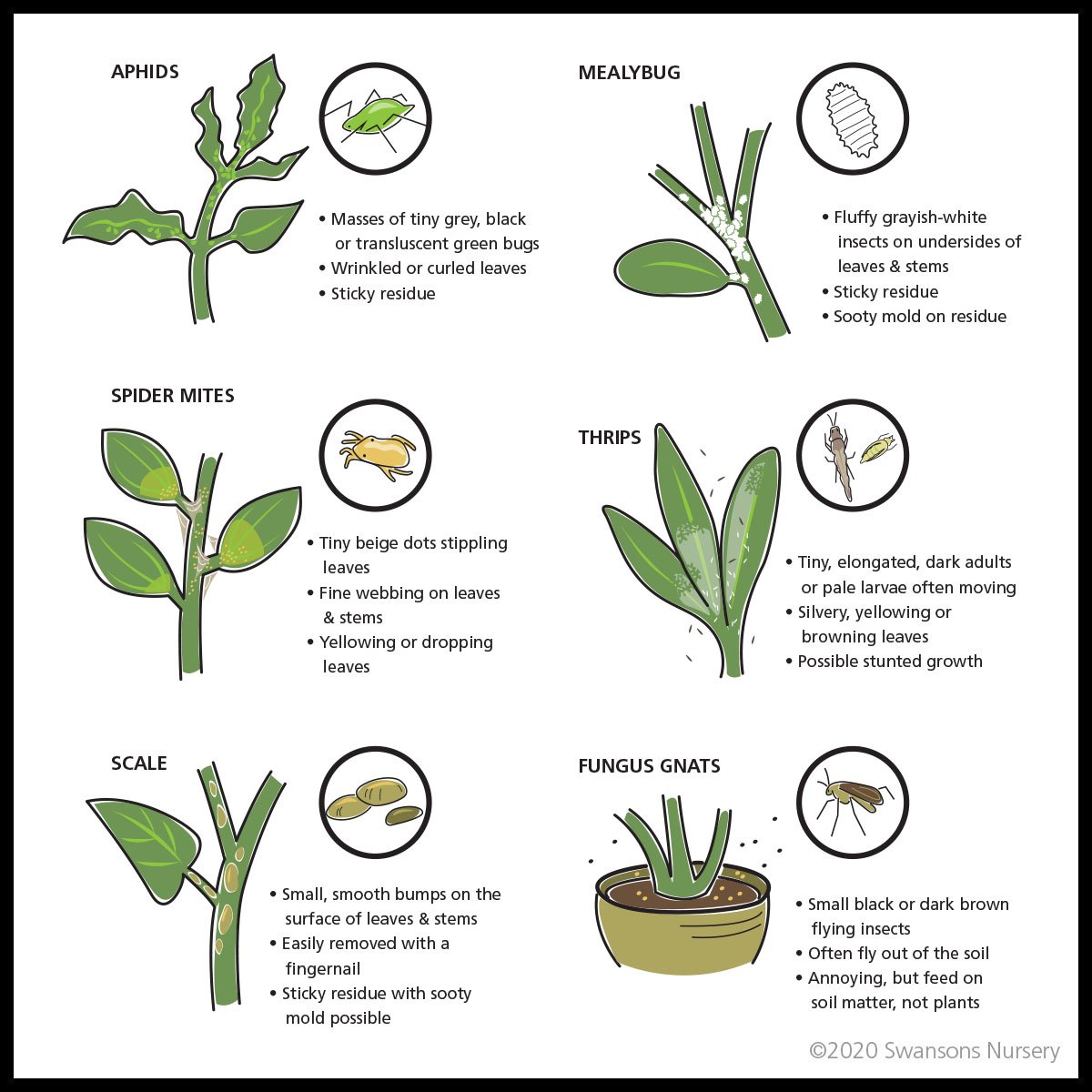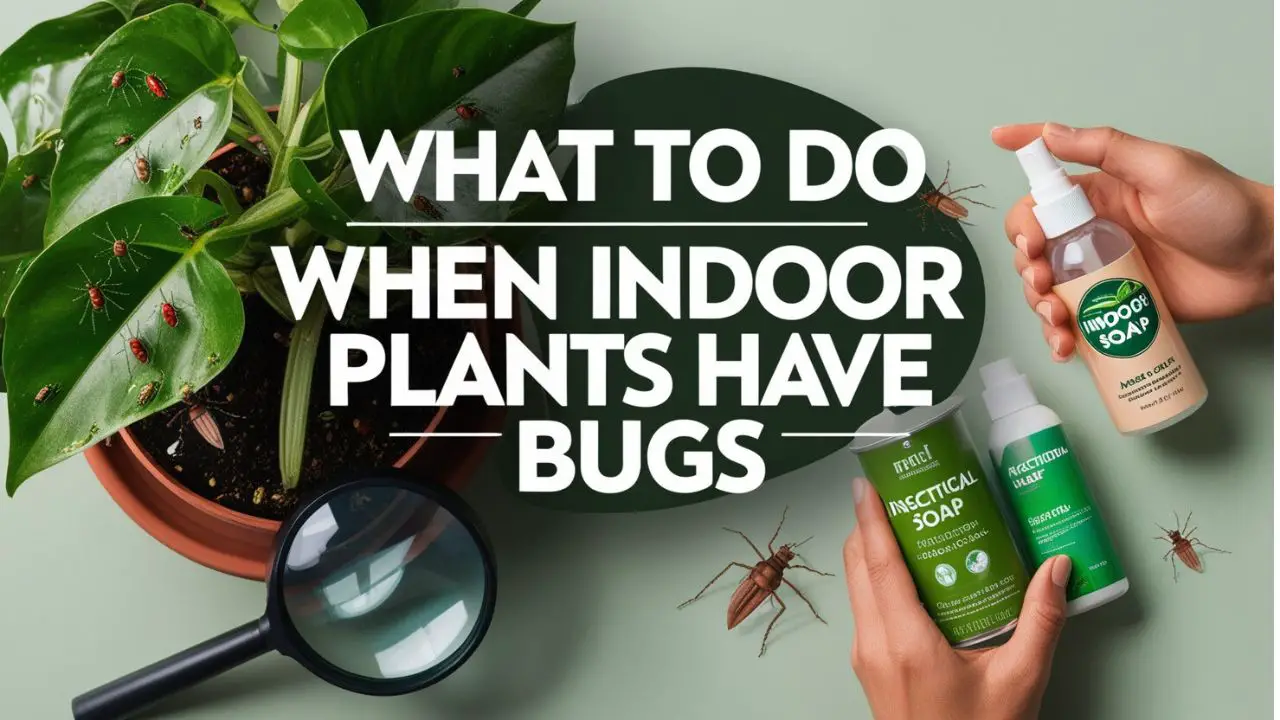To handle bugs on indoor plants, isolate the affected plants and use insecticidal soap. Regularly inspect and clean the plants.
Indoor plants bring life and beauty to any space, but bugs can ruin their charm. Pests like aphids, spider mites, and gnats can infest your plants and cause damage. Early detection and immediate action are crucial to keeping your plants healthy.
Isolate the infested plants to prevent the spread of bugs. Use insecticidal soap or natural remedies to treat the pests. Regularly inspect your plants for signs of bugs and maintain proper care. Clean the leaves and soil to remove any hidden pests. By following these steps, you can keep your indoor plants bug-free and thriving.
Indoor Plant Pests: An Unwelcome Surprise
Indoor plants bring life and color to your home. But bugs can spoil your green paradise. These pests are not only annoying. They can damage your plants. Understanding these pests is crucial. It helps you protect your plants.
Common Types Of Indoor Plant Bugs
There are many types of indoor plant bugs. Here are some common ones:
- Aphids: These small, green insects suck sap from plants.
- Spider Mites: Tiny red or black bugs that weave webs.
- Fungus Gnats: Small flies that live in moist soil.
- Mealybugs: White, cotton-like bugs that gather in clusters.
- Scale Insects: Brown or black bumps on stems and leaves.
Signs Your Plants May Be Infested
Look for these signs to spot an infestation:
- Yellowing Leaves: Bugs drain nutrients, causing leaves to yellow.
- Sticky Residue: Some pests leave a sticky substance called honeydew.
- Webbing: Spider mites create fine webs on plants.
- Wilting: Infested plants may wilt, even with enough water.
- Visible Bugs: You may see bugs on leaves or soil.
Understanding these signs can help you act quickly. Early detection saves your plants from serious damage.
Early Detection: Key To Plant Pest Control
Bugs can turn your indoor plant haven into a nightmare. Early detection is crucial to prevent a full-blown infestation. By catching pests early, you can save your plants from severe damage.
Regular Inspection Techniques
Regular inspection is the first step in pest control. Here are some effective techniques:
- Visual Check: Look at leaves and stems closely. Check for tiny bugs or eggs.
- Leaf Turnover: Flip leaves to inspect the undersides. Many pests hide there.
- Soil Check: Examine the soil surface. Some pests live in the soil.
Use these techniques weekly. Consistent checks help spot pests early.
Identifying Pests Before They Multiply
Identifying pests early helps stop them from spreading. Here are common indoor plant pests and their signs:
| Pest | Signs |
|---|---|
| Aphids | Sticky residue on leaves, curled leaves |
| Spider Mites | Webbing on leaves, tiny red or yellow specks |
| Mealybugs | White, cotton-like masses on plants |
Once you identify the pest, take action quickly. Isolate the affected plant to prevent the spread.
Natural Remedies: Eco-friendly Solutions
Indoor plants sometimes attract bugs. These bugs harm the plants. Using chemicals is not always safe. Instead, try natural remedies. They are eco-friendly and effective.
Neem Oil And Its Uses
Neem oil is a natural remedy. It is made from neem tree seeds. This oil is safe for plants and humans. Neem oil kills bugs and stops them from coming back.
To use neem oil, mix it with water. Use this ratio:
| Ingredient | Amount |
|---|---|
| Neem Oil | 2 teaspoons |
| Water | 1 quart |
Put this mix in a spray bottle. Spray it on the plants. Do this once a week. This will keep bugs away.
Homemade Insecticidal Soaps
Insecticidal soaps are easy to make at home. They kill bugs without harming the plants. Use simple ingredients like dish soap and water.
Here is a simple recipe:
- Mix 2 teaspoons of mild dish soap with 1 quart of water.
- Put the mix in a spray bottle.
- Spray the solution on the plants.
Do this once a week. The soap kills bugs by breaking their outer layer.
Be sure to use mild dish soap. Strong soap can hurt the plants. Test the solution on a small part of the plant first. Wait 24 hours. If the plant is fine, spray the whole plant.

Credit: planterhoma.com
Chemical Treatments: When To Use Them
Dealing with bugs on indoor plants can be frustrating. Sometimes, natural solutions don’t work. This is when chemical treatments become necessary. They can quickly get rid of pests. But it’s important to use them correctly. This ensures the safety of your plants and home.
Choosing The Right Insecticide
Not all insecticides are the same. You need to pick one that targets the specific pests on your plants. Look for products labeled for indoor use. These are safer for your home environment.
| Type of Pest | Recommended Insecticide |
|---|---|
| Aphids | Neem Oil |
| Spider Mites | Insecticidal Soap |
| Mealybugs | Horticultural Oil |
Always read the label before buying. Ensure it suits your specific needs.
Application Tips For Maximum Effect
Applying insecticides correctly is crucial. Follow these tips for the best results:
- Read the instructions carefully.
- Wear protective gloves and a mask.
- Apply in a well-ventilated area.
- Avoid spraying directly on the flowers.
- Test on a small leaf first.
Do not overuse the product. Overuse can harm your plants. Follow the recommended dosage strictly.
For larger infestations, repeat the treatment weekly. This ensures all pests are eliminated.
Store insecticides out of reach of children and pets.
Quarantine: Isolating The Affected Plants
Finding bugs on indoor plants can be frustrating. Quarantine is crucial to prevent the spread of pests. Isolating the affected plants will give you time to treat them without risking other plants.
Steps To Quarantine
- Identify the Infested Plants: Check all your plants for signs of bugs. Look for discolored leaves, webbing, or tiny insects.
- Choose a Quarantine Area: Find a spot away from other plants. A separate room or a corner works well.
- Move the Affected Plants: Carefully relocate the infested plants to the quarantine area. Avoid shaking them to prevent spreading bugs.
- Inspect Regularly: Check the quarantined plants daily. Watch for new signs of pests or worsening conditions.
- Treat the Pests: Use insecticidal soap or neem oil. Follow the instructions on the product label.
- Monitor Progress: Keep the plants in quarantine until they are pest-free. This might take a few weeks.
Preventing Spread To Healthy Plants
- Wash Your Hands: Clean your hands before and after handling plants. Use soap and water.
- Sanitize Tools: Disinfect pruning shears and other tools. Use rubbing alcohol or bleach solution.
- Avoid Cross-Contamination: Do not use the same watering can for both healthy and infested plants.
- Check New Plants: Inspect new plants for pests before introducing them to your home. Quarantine new plants for a week.
- Regular Inspections: Make checking your plants a weekly routine. Early detection can prevent widespread infestations.
Cultural Practices: Strengthen Plants Naturally
Healthy plants can fight off bugs better. By using cultural practices, you can make your indoor plants strong. This involves proper watering habits, optimizing light, and ensuring good nutrition. These steps will help keep your plants bug-free.
Proper Watering Habits
Watering your plants correctly is key. Too much water can cause root rot. Too little water can make plants weak. Follow these tips for proper watering:
- Check soil moisture before watering.
- Water deeply, but infrequently.
- Use a pot with drainage holes.
- Avoid letting plants sit in standing water.
Optimizing Light And Nutrition
Plants need the right amount of light and nutrients to stay healthy. Weak plants attract bugs. Here is how to optimize light and nutrition:
| Aspect | Tips |
| Light | Place plants where they get enough light. Rotate plants for even light exposure |
| Nutrition | Use the right fertilizer. Follow instructions on the package. Feed plants during growing season. |
Regular Maintenance: A Preventative Strategy
Indoor plants can sometimes attract bugs. Regular maintenance helps prevent this problem. It’s important to inspect your plants often. This way, you can catch any issues early. Here are some simple steps to keep your plants healthy and bug-free.
Cleaning Leaves And Soil
Dirty leaves can attract pests. Use a damp cloth to wipe leaves weekly. This removes dust and potential pests. Be gentle to avoid damaging the leaves.
Cleaning the soil is also crucial. Dead leaves and debris can attract bugs. Remove any fallen leaves from the soil. This keeps the environment clean and less inviting for pests.
Repotting With Sterile Soil
Bugs can hide in old soil. Repot your plants with sterile soil to prevent infestations. Sterile soil is free from pests and diseases. This gives your plants a fresh start.
When repotting, choose a pot with good drainage. This prevents water from sitting in the soil. Too much moisture can attract bugs.
| Maintenance Task | Frequency | Benefits |
|---|---|---|
| Cleaning Leaves | Weekly | Removes dust and pests |
| Removing Soil Debris | As needed | Prevents bug attraction |
| Repotting | Yearly | Fresh, sterile soil |
- Inspect plants regularly to catch issues early.
- Wipe leaves with a damp cloth to keep them clean.
- Remove dead leaves from the soil to prevent pests.
- Repot with sterile soil to avoid infestations.
By following these steps, you can keep your indoor plants healthy and bug-free. Regular maintenance is key to a thriving indoor garden.
Professional Help: When To Call An Expert
Dealing with bugs on indoor plants can be frustrating. Sometimes, home remedies and DIY solutions just don’t work. That’s when calling a professional becomes necessary. Experts can identify persistent pests and use advanced methods to eradicate them. This ensures your plants stay healthy and bug-free.
Identifying Persistent Pests
Some pests are hard to get rid of. They hide well and multiply quickly. Professionals can spot these persistent pests. They know where to look and what to look for. This includes tiny bugs that are hard to see with the naked eye.
| Common Pests | Signs to Look For |
|---|---|
| Spider Mites | Webbing on leaves |
| Aphids | Sticky residue on plants |
| Fungus Gnats | Small flies around soil |
Advanced Pest Eradication Methods
Experts use advanced methods to remove pests. These methods are more effective than home remedies. Here are some techniques they use:
- Systemic Insecticides: These are chemicals that plants absorb. They kill pests from the inside out.
- Biological Controls: This involves using beneficial insects. These insects eat the harmful pests.
- Horticultural Oils: These oils smother pests and their eggs.
Professionals also offer advice on preventing future infestations. They can teach you how to care for your plants better. This includes watering tips, proper sunlight, and the right type of soil. Their expertise ensures your indoor garden stays healthy and vibrant.
Post-eradication: Monitoring Plant Recovery
After eradicating pests, it’s crucial to monitor your plants’ recovery. Keeping an eye on plant health ensures they bounce back stronger. Here are some steps to track their progress effectively.
Tracking Plant Health
Begin by observing the leaves and stems for signs of new growth. Healthy plants will produce fresh, green leaves. Check daily for any discoloration or wilting. These can indicate ongoing issues. Use a magnifying glass to inspect for any remaining pests. Keep a journal to note changes in your plant’s appearance.
Regularly inspect the soil and roots. Healthy roots are white and firm. Gently remove the plant from its pot to examine the root ball. Look for any rotting or foul smell. If detected, take action immediately.
Adjustments After Pest Treatment
Adjust watering schedules to support plant recovery. Over-watering can lead to root rot. Ensure the soil dries out between waterings. Monitor the humidity levels around your plants. Use a humidifier if necessary to create an ideal environment.
Consider using a balanced fertilizer to boost plant health. Follow the manufacturer’s instructions to avoid over-fertilizing. Too much fertilizer can harm the plant.
| Task | Frequency |
|---|---|
| Inspect leaves and stems | Daily |
| Check soil and roots | Weekly |
| Adjust watering | As needed |
| Monitor humidity | Weekly |
| Apply fertilizer | Monthly |
By following these steps, you can ensure your indoor plants recover fully after a pest infestation.

Credit: www.housedigest.com

Credit: www.swansonsnursery.com
Frequently Asked Questions
What Gets Rid Of Bugs In Indoor Plants?
Use insecticidal soap or neem oil to remove bugs from indoor plants. Ensure proper drainage and avoid overwatering.
Why Do I Have Little Bugs On My Indoor Plants?
Little bugs on indoor plants are often due to overwatering, poor air circulation, or contaminated soil. Inspect plants regularly.
How Do I Keep Bugs Out Of My Potted Plants?
Use well-draining soil and water plants properly. Keep pots clean and inspect regularly. Use natural repellents like neem oil.
Is It Normal To Have Bugs In Potting Soil?
Yes, it is normal to have bugs in potting soil. These bugs help break down organic matter. To minimize them, store soil properly and avoid overwatering.
Conclusion
Dealing with bugs on indoor plants can be challenging. Regular inspection and proper care are essential. Use natural remedies and ensure good air circulation. Keep your plants healthy to prevent infestations. With consistent effort, you can enjoy beautiful, bug-free indoor plants.
Happy gardening!

My mission is to help you bring the beauty of nature indoors with expert advice, detailed plant care guides, and creative design ideas.




